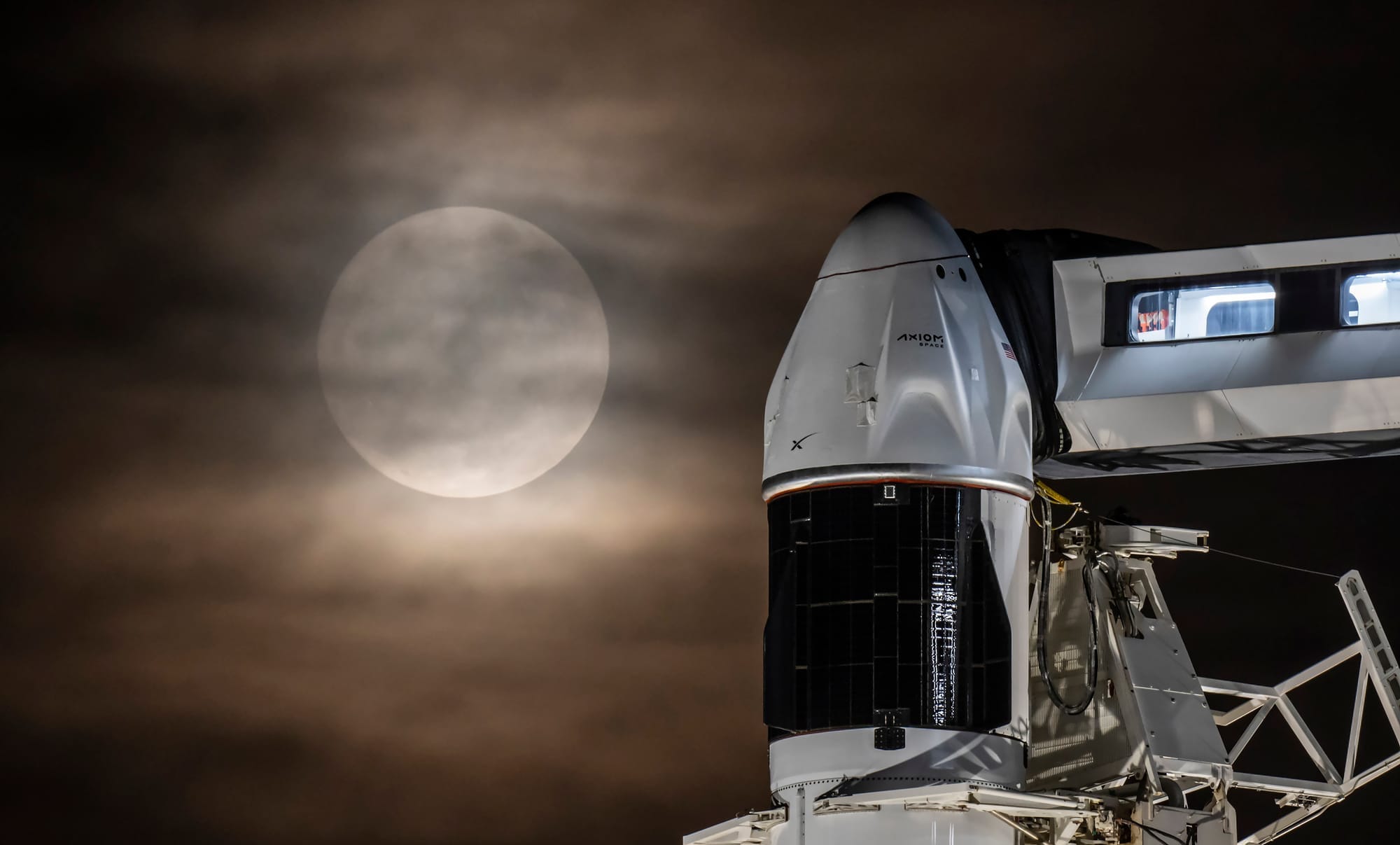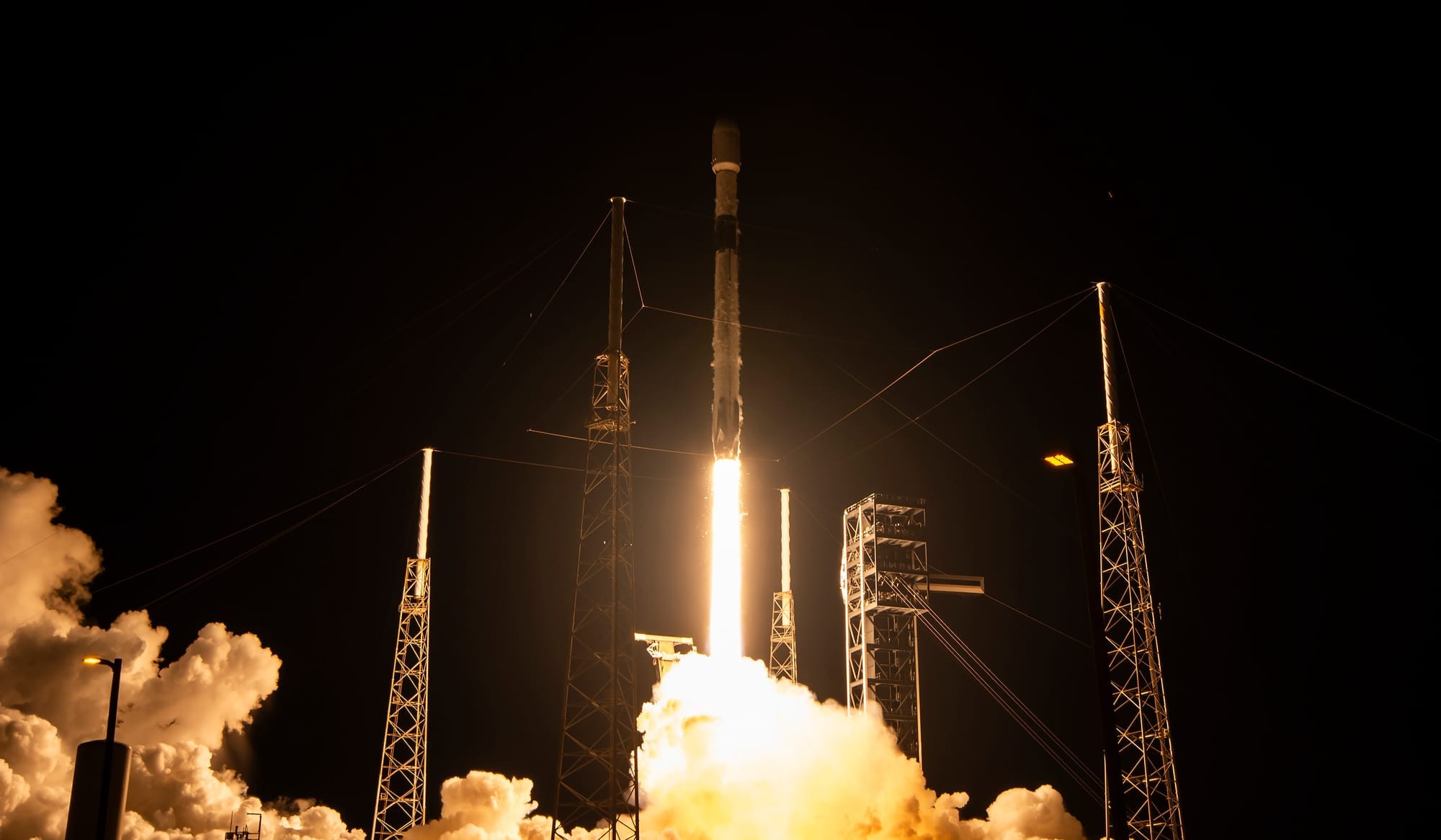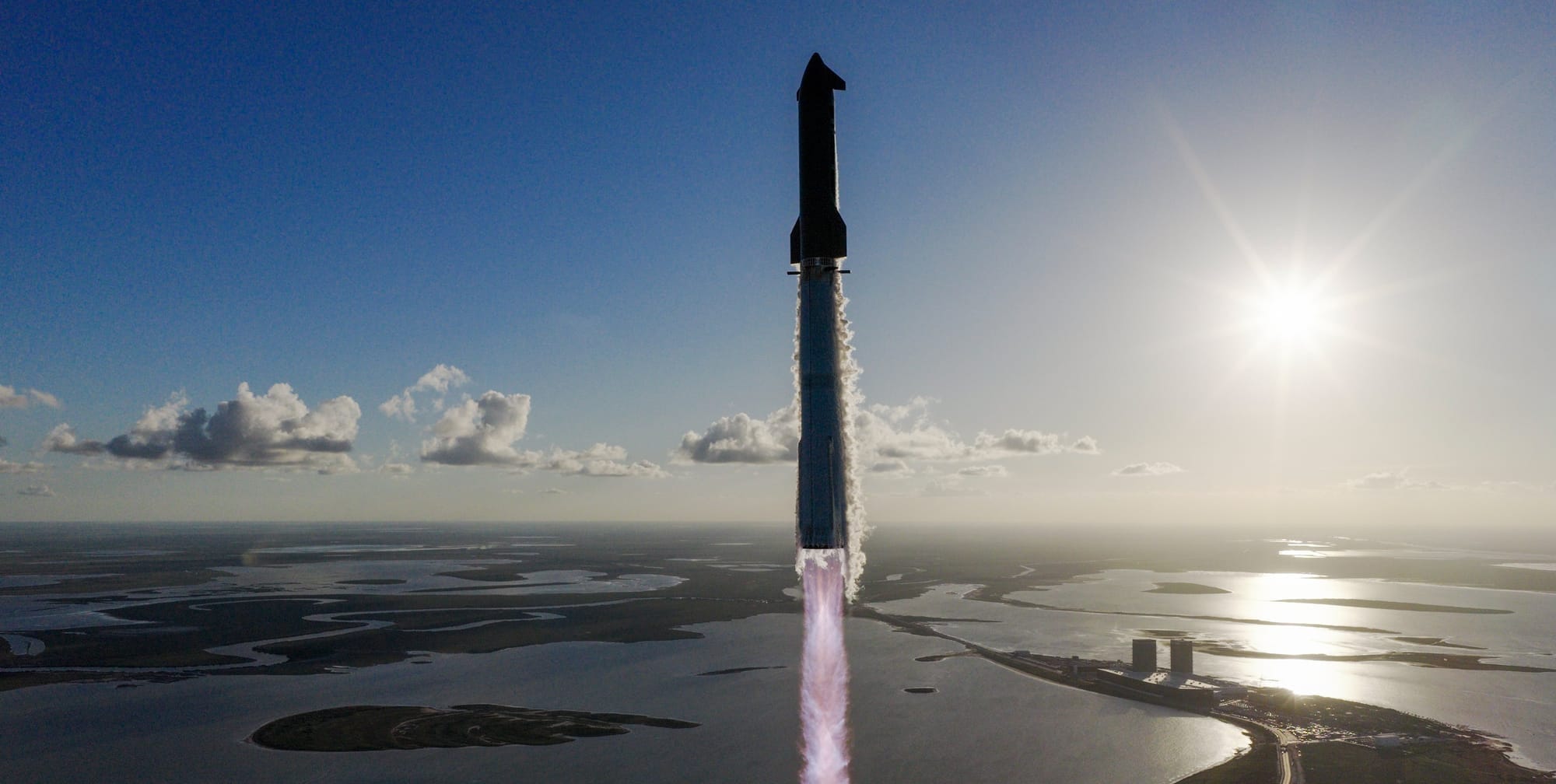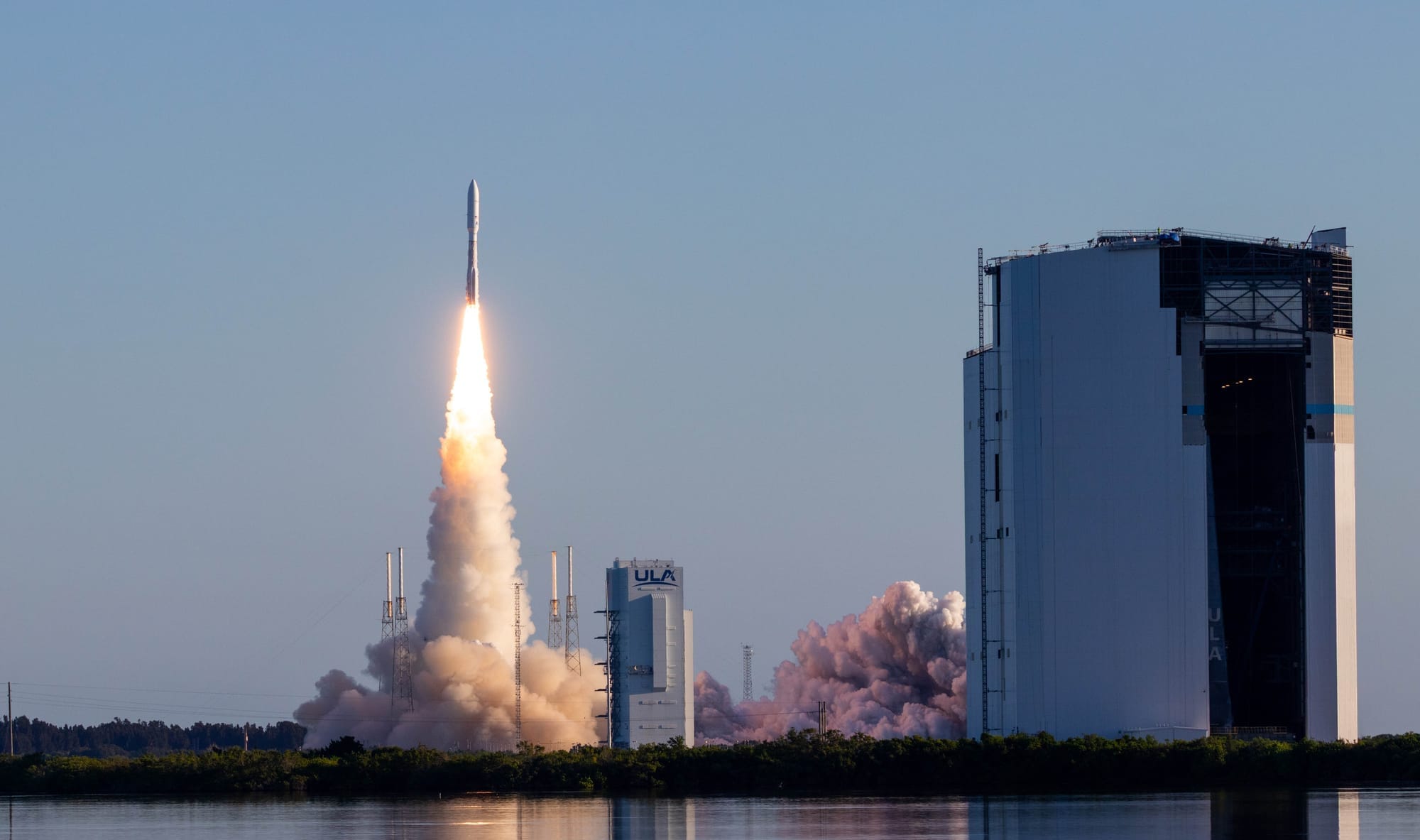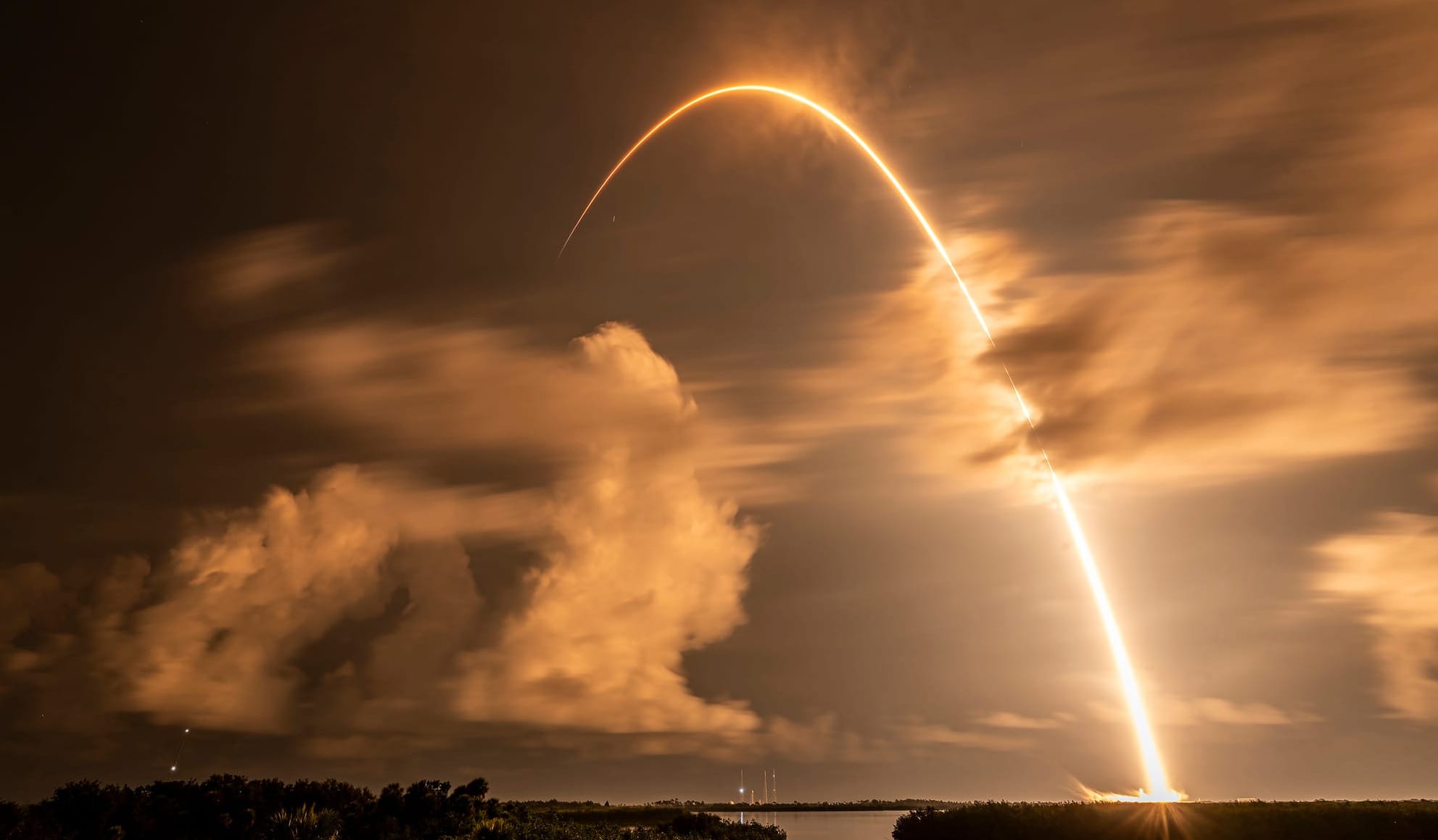Table of Contents
Axiom Space, SpaceX, and NASA have been preparing for the launch of the Axiom-4 mission for the past week now, with liftoff atop of a Falcon 9 from Launch Complex 39A delayed multiple times now.
The latest delay to the mission stems from an issue onboard the International Space Station, particularly the aft of the Zvezda module in the Russian segment, with NASA sharing the following details:
"Cosmonauts aboard the space station recently performed inspections of the pressurized module’s interior surfaces, sealed some additional areas of interest, and measured the current leak rate. Following this effort, the segment now is holding pressure. The postponement of Axiom Mission 4 provides additional time for NASA and Roscosmos to evaluate the situation and determine whether any additional troubleshooting is necessary."
An air leak onboard the space station has been known for several years, but with Roscosmos and NASA disagreeing on the severity and root cause.
Previous delays to the mission were also related to a leak, but on Falcon 9's first-stage booster. SpaceX teams utilized the delay to install mitigations to the issue and swap out other faulty hardware.
Axiom Space is currently happy to wait on the ground while issues are resolved, with the company's executive Chairman, Kam Ghaffarian, stating:
"We appreciate all the incredible work of our customers, NASA, and SpaceX on this Mission. This is the right thing to do for Axiom Space, for NASA, and for our customers. We will continue to work with all of our partners to finalize a new launch date and look forward to flying the Ax-4 Mission soon."
Flying onboard the Axiom-4 mission are India, Hungary, and Poland's first astronauts in decades, along with a variety of customer payloads, scientific and commercial.
Axiom-4 is planned to spend two weeks docked to the International Space Station once the mission launches. While onboard, the crew is expected to perform lots of science, as well as outreach and commercial activities.
Who's onboard?
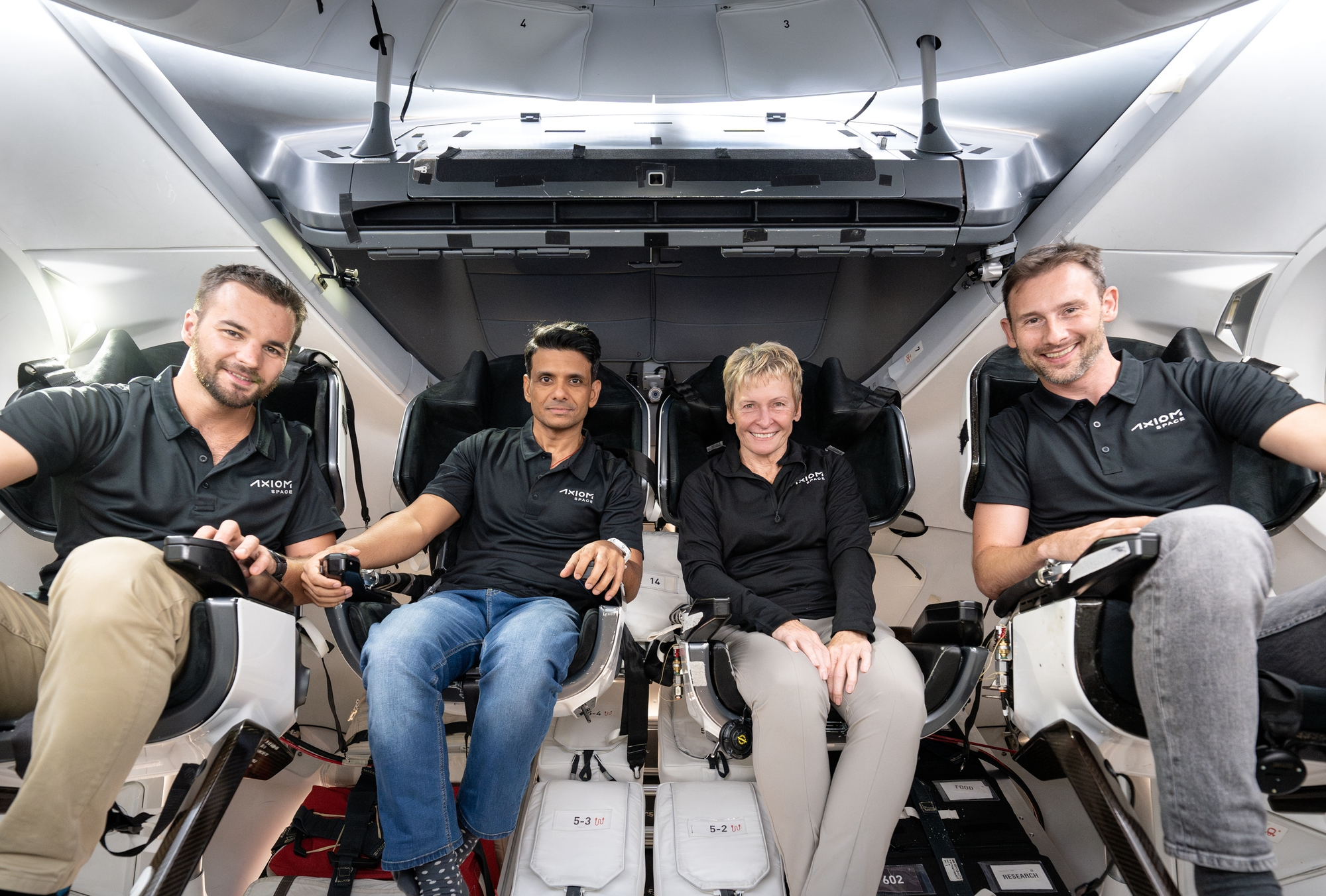
Peggy Whitson, from the U.S., is the Commander of the Axiom-4 mission, flying to space for the fifth time. She previously commanded the Axiom-2 mission in 2023 and participated in three long-duration spaceflights during her career at NASA. In total, she has spent 675 days in space.
Shubhanshu Shukla, from India, is the Pilot of the Axiom-4 mission for his first trip to space. He was selected in 2024 as one of India's first four astronauts in the 21st century, possibly to fly aboard the first crewed Gaganyaan mission within a few years. Prior to astronaut selection, he was a pilot in the Indian Air Force.
Sławosz Uznański-Wiśniewski, from Poland, is a Mission Specialist for the Axiom-4 mission, as part of his first spaceflight. He was selected as a member of the European Space Agency’s Astronaut Reserve Class of 2022 for potential missions to the International Space Station. Notably before his space career, he was the Engineer in Charge for the Large Hadron Collider from 2018 to 2020.
Tibor Kapu, from Hungary, is a Mission Specialist for the Axiom-4 mission for his first trip to space. In 2023, he was one of four Hungarians chosen for the Hungarian to Orbit Astronaut Program. Before being selected, he focused on space radiation protection at an aerospace technology company.
What research will be performed?
The Axiom-4 mission is aiming to perform a bounty of science during the crew's brief stay onboard the International Space Station, with experiments from organizations in the U.S., India, Poland, Hungary, Saudi Arabia, Brazil, Nigeria, the United Arab Emirates, and much of Europe. Areas and items for study, along with what organizations or countries they're from, are as follows:
- Indian Space Research Organization:
- Investigating the physical and cognitive impact of computer screens in microgravity.
- Studying the growth, metabolism, and genetics of three microalgae strains in microgravity vs. ground.
- Comparing growth, cellular responses, and biochemistry of two cyanobacteria strains in microgravity.
- Identifying pathways of skeletal muscle dysfunction in microgravity and exploring therapies.
- Examining spaceflight impacts on six crop seed varieties.
- Investigating the impacts of spaceflight on the germination and growth of crop seeds.
- Identifying molecular mechanisms of resilience in extreme environments.
- European Space Agency:
- Studying astronauts' mental and behavioral health on the International Space Station.
- Monitoring bone loss upon re-entry after space missions.
- Examining bone markers to predict recovery behavior.
- Evaluating neurofeedback for stress reduction and performance.
- Investigating gut microbiome changes during short-term space stays.
- Examining immune cell adaptation to microgravity.
- Monitoring astronauts' soft tissue health during missions.
- Exploring muscle electrical stimulation to protect muscle mass in microgravity.
- Using brain imaging technology to develop a human-computer interface in microgravity.
- Testing methods to extend pharmaceutical shelf-life in space.
- Testing an acoustic monitor on the International Space Station.
- Advancing onboard data processing for space and Earth applications.
- Measuring space radiation levels with a monitor in the Columbus module.
- Assessing six wearable biomonitor devices for function and stability in space.
- Investigating red microalgae for long-duration space missions.
- Investigating a tardigrade gene in yeast for microgravity protection.
- Hungary:
- Examining how space conditions affect human bacterial, viral, and fungal microbiomes.
- Investigating microgravity's effect on cognitive function and motor skills.
- Demonstrating application of nanofibrous eye inserts in microgravity.
- Examining low-melting-point metal behavior for next-generation ion-jet propulsion systems.
- Monitoring crew radiation exposure and environmental conditions with a personal dosimetry device.
- Mimicking planet-scale atmospheric dynamics with a novel way of spinning a water sphere in microgravity.
- Investigating how fruit flies fight radiation-induced DNA damage with enhanced biochemical processes.
- Studying plant germination, microgreen production, and leaf development.
- Examining microfluidic drug testing chips in space.
- Studying associative learning and visual processing in space.
- Examining changes in cardiovascular and balancing systems.
- Understanding cerebral blood flow adaptation to spaceflight.
- Validating clothing heat transfer simulation in different gravity environments for improved astronaut thermal comfort.
- Testing precise position tracking with standard inertial sensors in space.
- Exploring spaceflight effects on 3D printed materials.
- Studying upper atmospheric thunderstorms.
- Demonstrating gravitational curiosities during a joint physics class with students from across Hungary.
- Axiom Space:
- Researching how to support astronauts with insulin-dependent diabetes during short-duration missions in microgravity.
- Examining microgravity's impact on the brain and cognitive risks.
- Collecting physiological and psychological data from astronauts to understand how humans adapt to space.
- Studying the effects of short spaceflights on joints and blood flow.
- Assessing astronaut ‘readiness’ using a wearable device, iPhone software, and AWS Snowcone analytics.
- Developing infrastructure for wearable device data processing during the Ax-4 mission.
- Investigating cancer growth in space, focusing on triple-negative breast cancer.
- Understanding the effects on blood stem cells during spaceflight.

